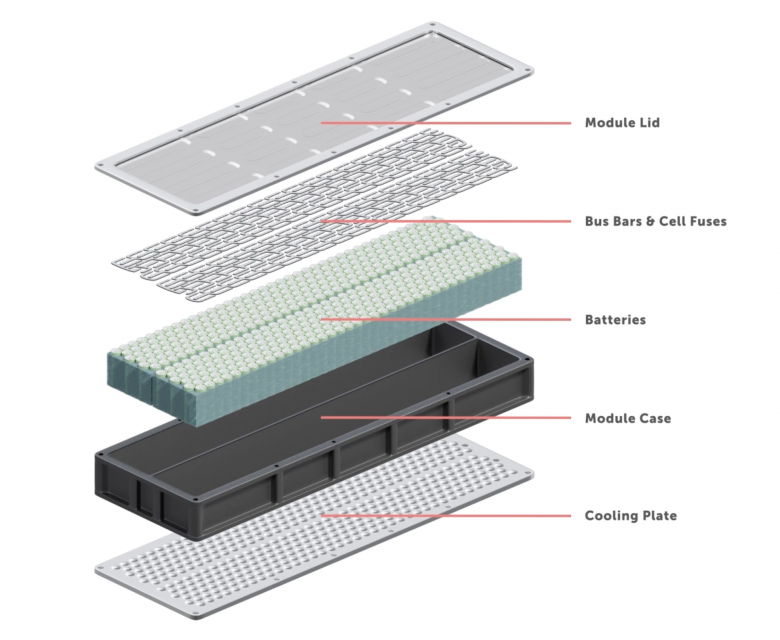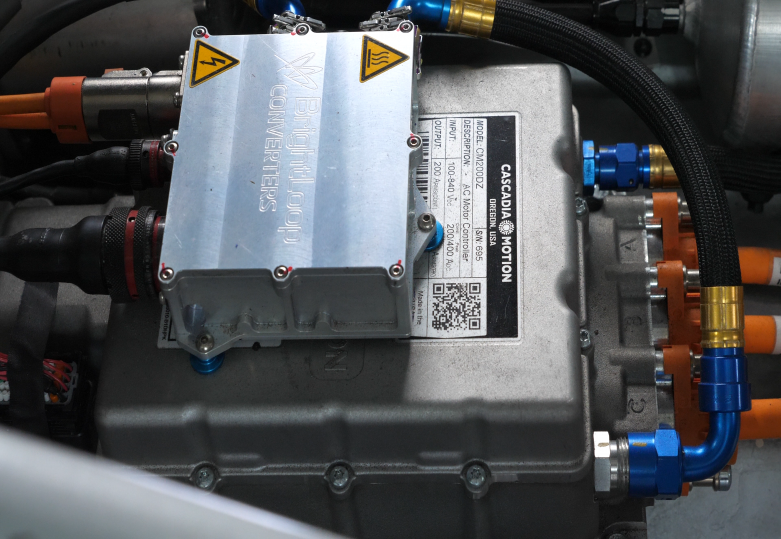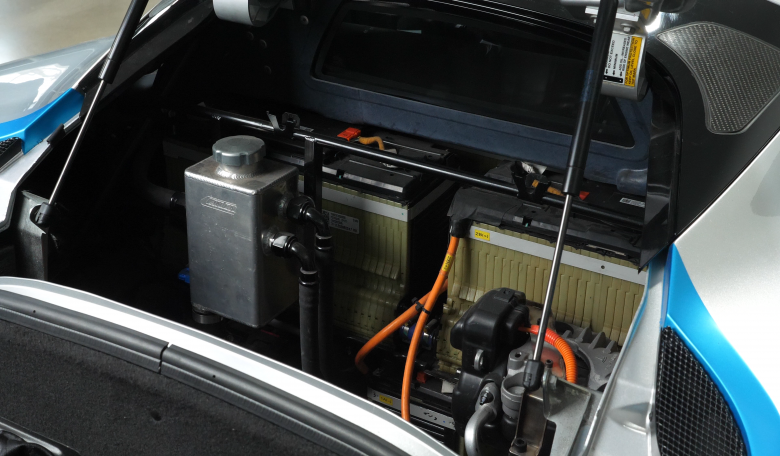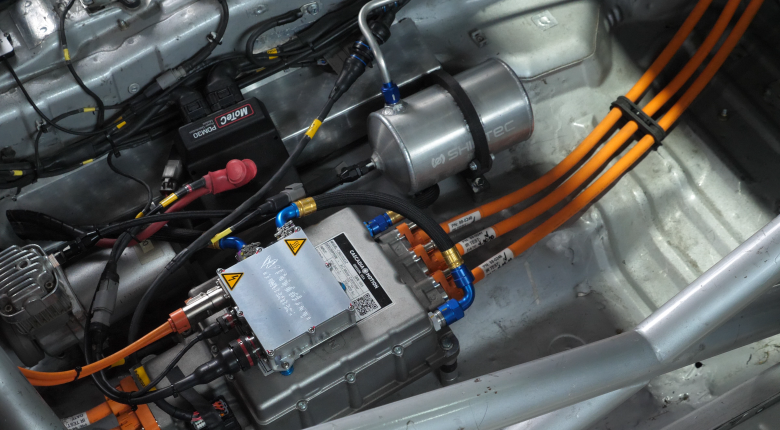Electric vehicle (EV) battery technology has made impressive strides in recent years, becoming significantly safer and more reliable. However, concerns about EV battery fires remain, primarily due to the highly publicized risk of spectacular failures that lead to intense fires. These incidents, while rare, are difficult to extinguish, adding to the sense of risk.
In this article, we’ll explore the common causes of EV battery fires, how these risks are mitigated, and what can be done to avoid these issues, whether you’re driving a factory-built EV or working on an EV conversion project.
In this article: The Reality of EV Battery Fires | Common Causes of EV Battery Fires | How to Prevent Battery Fires

The Reality of EV Battery Fires
Over the years, EV battery fires have garnered a lot of attention, but it’s essential to understand that all energy storage devices carry some level of risk—whether it’s a battery, a fuel tank, or even a steam engine boiler. Just as safety innovations have made fuel tanks and boilers safer over time, battery safety technology has also advanced significantly, thanks in part to stringent quality control standards imposed on all manufacturers.
These standards have reduced the risk of a runaway thermal event in EV batteries, making such incidents extremely rare. However, "rare" doesn’t mean impossible, and understanding how these failures happen can help you avoid them.
While EV battery fires are more challenging to extinguish than gasoline fires, they occur far less frequently and tend to propagate more slowly, giving you more time to respond.

Common Causes of EV Battery Fires
When it comes to lithium-ion battery fires, three main factors are responsible: excessive heat, puncture damage, and charging at too low a temperature.
1. Excessive Heat
If a battery cell reaches a certain temperature, it can ignite, similar to any other energy source. For lithium-ion batteries, this is due to the electrolyte solution inside the cell, which promotes efficient electron transfer. When the cell heats up, the electrolyte expands, and if the pressure builds too much, the cell can rupture. At around 420°C, the solution ignites upon contact with oxygen.
This triggers a chain reaction where surrounding cells follow suit, as the fire heats them. While modern fail-safes make this scenario unlikely, it's not impossible. For example, if uncontrolled currents from a charger push the voltage to critical levels and the Battery Management System (BMS) fails to detect it, the result could be thermal runaway. Thermal runaway continues heating the cell, even after charging has stopped, which can cause the electrolyte to ignite and the fire to spread throughout the battery.
It's worth noting that many cells don't experience thermal runaway no matter what voltage they're charged to. Every battery cell is different, and that's why the data sheets explaining the test results of each cell type are so important to know and understand.
2. Puncture Damage
Another major cause of battery fires is puncture damage. When a battery cell is punctured, it leads to an internal short circuit between the cathode and anode, generating intense heat. This heat can cause the electrolyte to ignite, especially when exposed to the oxygen entering through the puncture. If one cell ignites, the densely packed battery cells around it can also heat up, potentially igniting the entire pack.
Just like exposure to excessive heat there are exceptions. Many cells can be punctured without any kind of thermal event occurring, and some are much more sensitive to this type of event.
3. Charging at Too Low a Temperature
This issue is less common today, thanks to improved safeguards, but it remains a risk especially with DC fast charging in cold environments. Charging a lithium-ion battery at sub-zero temperatures can cause lithium plating on the anode, which permanently damages the battery. In extreme cases, this plating can build up, placing pressure on the separating membrane between the positive and negative components, eventually leading to a short circuit and fire.
What’s particularly dangerous here is that the short circuit may not occur immediately. It might happen later, triggered by vibrations or shocks, such as hitting a speed bump too hard, leading to an unexpected chain reaction.

How You Can Prevent Battery Fires
Thankfully, manufacturers—both OEM and aftermarket—have well-developed protocols to avoid these problems through Battery Management Systems (BMS) and Vehicle Control Units (VCU). However, if you’re working on an EV conversion project, you’ll need to take some extra precautions.
1. Understand the Cells You're Using
Most aftermarket cells come with test data that indicates how sensitive the cells are to overcharging, heating, or puncturing. Understanding the specific cells you're working with helps assess the risks involved.
2. Ensure Safety Protocols Are in Place
Make sure the safety protocols—such as those built into the BMS—are correctly configured and functioning. This will help mitigate the risk of overcharging, over-temperature, or puncture incidents.
3. Protect Your Battery Pack
Protecting the battery pack from external damage is critical. Many OEMs use reinforced underbody protection, as EV batteries are usually installed under the vehicle floor. For conversions, you may mount the battery in a different location, but regardless of where you install it, the pack should be well protected from damage in the event of an accident.
Additionally, ensure there is some level of containment between the battery and the vehicle’s occupants, similar to having a firewall between the driver and a fuel tank in an internal combustion engine (ICE) vehicle. This way, even in a thermal runaway scenario, the occupants are shielded from the battery pack.

Conclusion
While the media often highlights the risks of EV battery fires, the reality is that they are far less common than fires in ICE vehicles. The quality control methods used in modern EV manufacturing, along with various fail-safes in the BMS and VCU, make battery fires highly unlikely.
The three primary culprits behind these rare fires are high temperatures, puncture damage, and charging at sub-zero temperatures. Even if one cell fails, the risk of a thermal runaway affecting the entire battery pack is minimized through careful design and safety mechanisms. By understanding these risks and taking the right precautions, whether in a factory EV or a custom conversion project, you can significantly reduce the chances of a battery fire.
If you're interested in doing your own electric or hybrid vehicle project, the EV Fundamentals course is a great place to gain knowledge to help you and your project become more than just an idea in your head. Enrol now to gain instant access.






